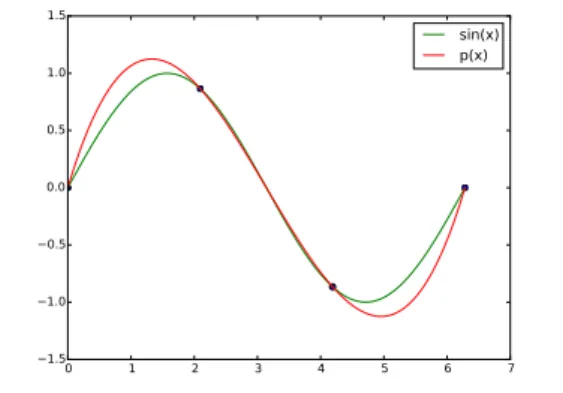Physik auf dem Computer SS 2017
Worksheet 2: Gauss Eliminiation
May 1, 2017
General Remarks
• The deadline for this worksheet isMonday, May 8th, 2017, 12:00 noon
• In this worksheet, you can achieve a maximum of 10 points.
• To hand in your solutions, send an email to your tutor:
– Johannes Zeman zeman@icp.uni-stuttgart.de (Tue 15:45–17:15) – Michael Kuron mkuron@icp.uni-stuttgart.de(Wed 15:45–17:15) – Kai Szuttor kai@icp.uni-stuttgart.de(Thu 14:00–15:30)
• Attach all required files to the e-mail. If asked to write a program, attach the source code of the program. If asked for a text, send it as a PDF file or in plain text format.
• The worksheets are to be solved in groups of two or three people. We will not accept hand-in exercises that only have a single name on it.
Task 2.1: Gauss Elimination (3 points)
Copy the Python program gauss.pyfrom the website to your home directory.
The program contains the function backsubstitute(A,b), which solves the equation Ax=b for the case where A is an upper triangularN ×N matrix.
Furthermore, it contains the skeleton of a function gauss_eliminate(A,b), which is supposed to do a Gauss elimination for an N ×N square matrix, and the function solve(A,b), that shall use the previous two functions to solve the linear equation system Ax=b.
Implement the function gauss_eliminate(A,b). Do not use any functions from scipy.linalg etc. to do so.
Hint To test whether the function works,gauss.pycontains two matricesA1 andA2, two vectors b1
and b2 and the corresponding solutions x1 and x2 which solve the equationAixi =bi. The function solve(A,b) should be able to solve the first of these equations, while the second can only be solved after task 2.3 has been completed.
Task 2.2: Interpolating Polynomial (3 points)
The interpolating polynomial of a set of N points (xi, yi) is the polynomial p(x) of degree (N−1) that passes through all of these points. When the points are chosen from another function f(x) (so that the points are given by (xi, f(xi))), the polynomial is an approximation of the function. The interpolating polynomial is given by
p(x) =
N
X
i=0
aixi, (1)
where the coefficients ai are defined by the set of iequationsp(xi) =f(xi).
1
• 2.2.1(1 point) Write a Python program that uses the functionsolve()from the previous task to determine the coefficientsai of the interpolating polynomial of the function numpy.sin()for 4 equidistant points on the interval [0,2π]. Do not use any functions fromscipy.interpolate etc. to do so.
• 2.2.2(1 point) Write a functionpolyeval(a,x)that evaluates the polynomialp(x) for the given set of coefficientsa. Do not use any functions from scipy.polynomialetc. to do so.
• 2.2.3(1 point) Write a Python program that plotsnumpy.sin()and its interpolating polynomial on the interval [0,2π] (as in figure1).
0 1 2 3 4 5 6 7
1.5 1.0 0.5 0.0 0.5 1.0
1.5 sin(x)
p(x)
Figure 1: sin(x) and the interpolating polynomial p(x)
Task 2.3: Gauss Elimination and Pivoting (4 points)
• 2.3.1(2 points) Extend the function gauss_eliminate() from task 2.1 such that it implements the Gauss elimination with partial pivoting (Spaltenpivotisierung). With this function, it should be possible to solve A2x2=b2 from Task 2.1.
• 2.3.2 (2 points) Extend the function gauss_eliminate() and solve() from task 2.1 such that it implements the Gauss elimination with complete pivoting (Totale Pivotisierung).
2
